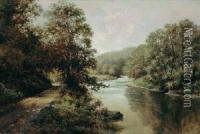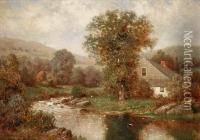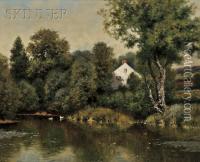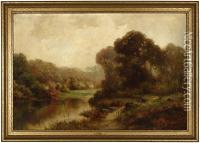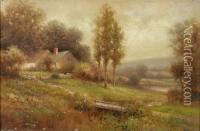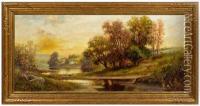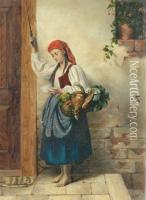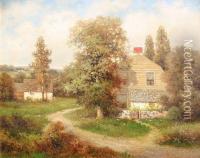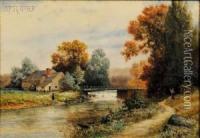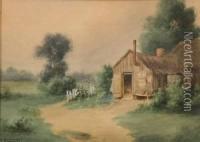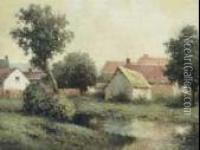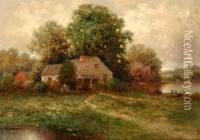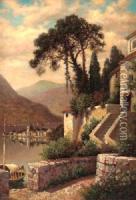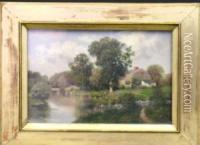Milton H. Lowell Paintings
Milton H. Lowell was an American landscape painter born in 1848, who gained notable recognition for his depictions of the New England countryside. His work is characterized by its attention to detail, vibrant colors, and the serene mood it evokes, capturing the essence of the American rural landscape during the turn of the century.
Lowell's interest in art began at an early age, and he pursued his passion by studying at various institutions, including the National Academy of Design in New York. He was greatly influenced by the Hudson River School, a mid-19th century American art movement embodied by a group of landscape painters whose aesthetic vision was influenced by romanticism. However, Lowell managed to develop his own unique style, infusing his landscapes with a sense of tranquility and a love for nature.
Throughout his career, Lowell traveled extensively across the United States, drawing inspiration from the vast and varied landscapes he encountered. His travels not only expanded his artistic horizons but also allowed him to capture the diverse beauty of the American landscape, from the rugged coasts of New England to the lush forests of the Midwest.
Milton H. Lowell's works were widely exhibited during his lifetime, including at prestigious venues such as the National Academy of Design and the Boston Art Club. His paintings were well received by both critics and the public, earning him a reputation as one of the leading landscape painters of his time.
Despite his success, Lowell remained dedicated to his craft, constantly striving to capture the ever-changing moods of the natural world. His dedication to landscape painting contributed significantly to the American art scene of the late 19th and early 20th centuries, leaving a lasting legacy that continues to be appreciated by art lovers and collectors alike.
Milton H. Lowell passed away in 1927, but his work continues to be celebrated for its contribution to American landscape painting, encapsulating the beauty and spirit of the American countryside at a pivotal time in the country's history.
